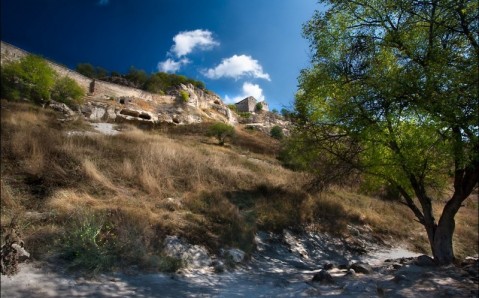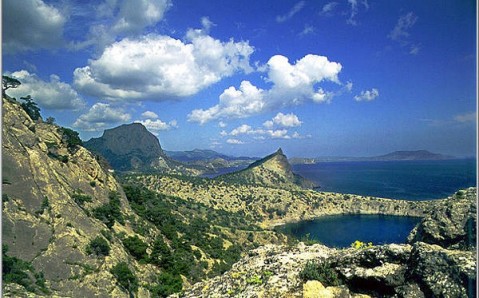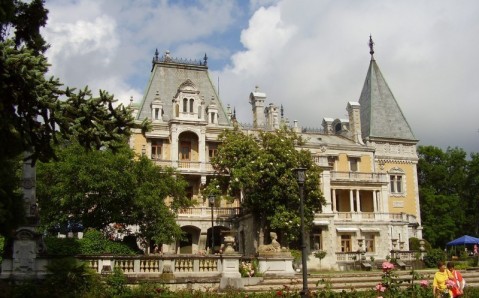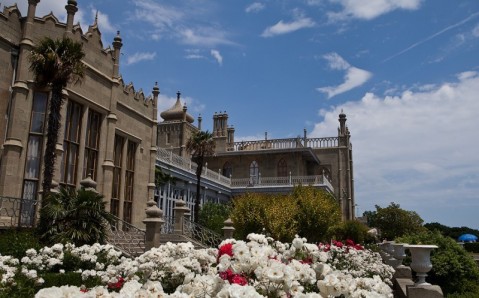Chufut Kale
•
Bakhchysarai (37 km.)
Chufut Kale
•
Bakhchysarai (37 km.)
The ‘cavern fortress’ Chufut Kale is one of the most shining and the best-preserved medieval landmarks of the peninsula. It is located near Bakhchisaray (around 3 km, or 2 miles) on a mountain plateau with precipices 1.5 kilometers (1 mile) above sea level. It may be said that nature created this fort, and people have only strengthened and improved its defenses.
To be fair, it should be mentioned
Novyi Svit
•
Sudak (113 km.)
Novyi Svit
•
Sudak (113 km.)
Among all of the amazing corners of Crimea, Novyi Svit holds a special place. This small resort area, situated on the coast of the picturesque Green Bay, is famous for its breathtaking landscapes, unusual reserves, special curative microclimate, and comfortable beaches with clear water.
The godfather of Russian winemaking, Prince Lev Golitsyn, discovered this magical place in late 19th century. B
Massandra Palace
•
Yalta (53 km.)
Massandra Palace
•
Yalta (53 km.)
This palace is the most elegant and unusual palace on Crimea’s southern coast. Located in a remote picturesque place, surrounded by forest and mountains, the Massandra Palace, with its fanciful architecture, is reminiscent of a fairytale castle.
With its construction beginning in 1881, it was being built for prince Semyon Vorontsov based on the blueprints of a talented architect Etienne Bouchard.
Vorontsov Palace
•
Yalta (44 km.)
Vorontsov Palace
•
Yalta (44 km.)
This architectural monument to Romanticism is one of the shiniest pearls in the necklace that is Crimea. Created by people in tandem with nature, the Vorontsov Palace has amazed guests with its original look for almost two centuries.
The Palace was build in the middle of the 19th century as summer residence of Russian statesman, Prince Mikhail Vorontsov, who was the governor-general of Russia’s s
Livadia Palace
•
Yalta (49 km.)
Livadia Palace
•
Yalta (49 km.)
The white-stone Livadia Palace, which served as a summer residence for Russian emperors in the 19th - 20th centuries, is not just the most beautiful architectural installation of Crimea’s southern coast, but also an important historical monument. Here, Allied leaders defined the fate of the post-WWII world.
The history of the palace began in 1834, when Polish magnate Lev Potockiy bought the tiny

 Crimea
Crimea





